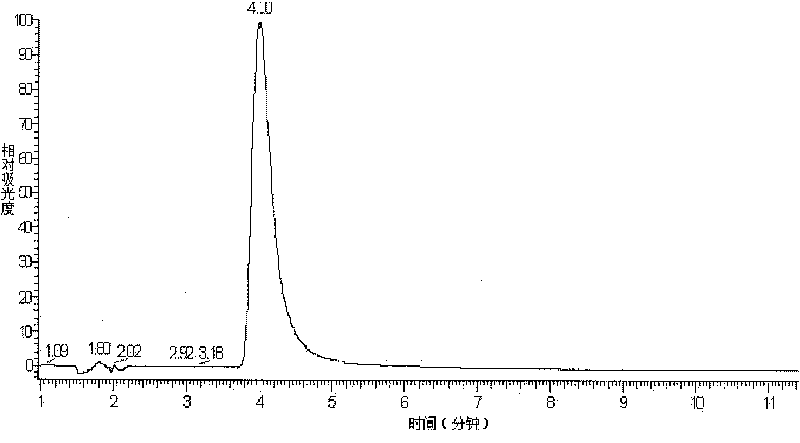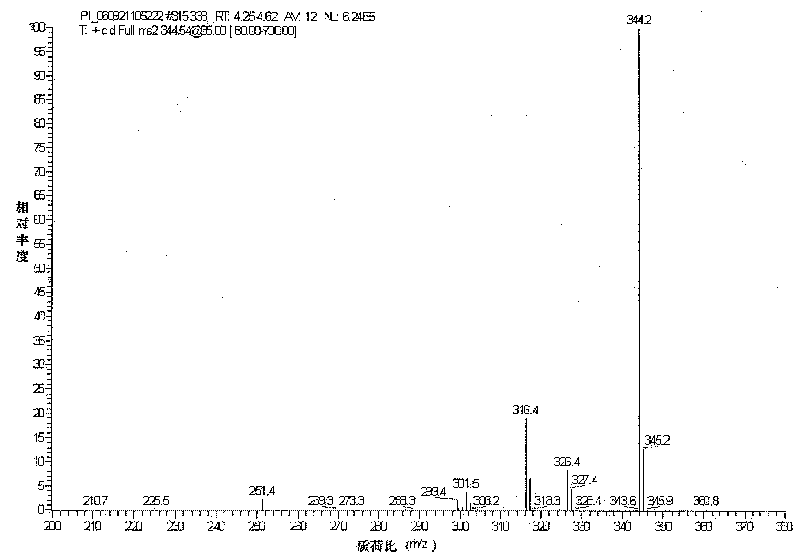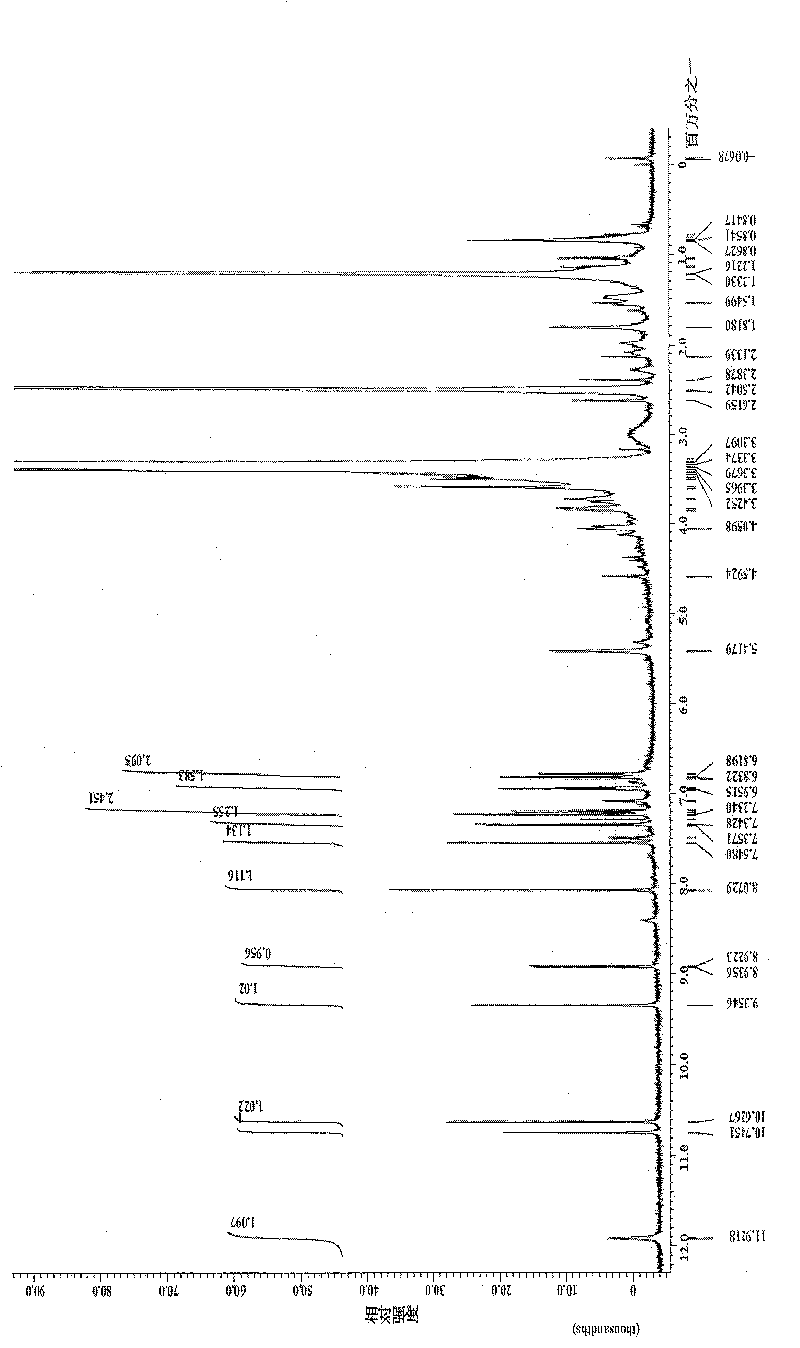Duganella bacterium and uses thereof
A technology of Duganella and strains, applied in the direction of bacteria, fermentation, etc., can solve the problems of limited species and few applied research, and achieve the effect of fast growth rate, good application prospect and good biological activity.
- Summary
- Abstract
- Description
- Claims
- Application Information
AI Technical Summary
Problems solved by technology
Method used
Image
Examples
Embodiment 1
[0028] Example 1. Isolation and identification of Duganella sp. B2 CGMCC № 2056
[0029] 1. Sample collection
[0030] Collect soil samples from Xinjiang Glacier No. 1
[0031] 2. Isolation and screening of strains
[0032] Prepare separation plate medium: 5g peptone, 3g beef extract, 20g agar, 1000ml water, pH 7.0. The above medium is 1.05kg / cm 2 , 121℃, autoclave for 20 minutes.
[0033] Make the soil sample into a 2% (2g / 100ml) suspension, and dilute it to 2×10 in 10-fold increments 8 , Take 0.2mL of each dilution sample solution and evenly spread on the above separation medium plate, culture for 7 days at 25°C, observe that there is a single blue colony, select the colony, conduct streaking separation, and pick again after culture Take a single colony of bacteria for streaking separation, repeat the above steps until it is a pure strain (detected with a microscope, the cell shape is consistent as a pure strain), and this strain is named B2, which is Duganella sp. B2 CGMCC №2056. ...
Embodiment 2
[0047] Example 2. Using Duganella sp. B2 CGMCC № 2056 to produce purple bacterin
[0048] 1. Strain culture
[0049] Prepare plate medium: 5g peptone, 3g beef extract, 20g agar, add water to 1000ml, adjust pH 7.0. Sterilize the plate medium at 121°C for 15 minutes, pour the plate, and insert Duganella sp. B2 CGMCC No. 2056 after cooling, and incubate at 25°C for 72 hours.
[0050] Prepare seed liquid medium (content per liter): 5g peptone, 3g beef extract, and adjust pH to 7.0. A single Duganella sp. B2 CGMCC № 2056 colony was picked from the plate and inoculated in a sterile liquid medium, and cultured at a temperature of 25° C., at a rotation speed of 200 rpm (rotation radius of 32 mm). After 24 hours of culture, the bacteria are in the logarithmic growth phase.
[0051] Prepare fermentation liquid culture medium: starch 15g, ferrous sulfate 0.03g, potassium nitrate 1g, dipotassium hydrogen phosphate 0.7g, magnesium sulfate 0.5g, tryptophan 0.5g and water to 1000ml, pH is 7.0. Pu...
Embodiment 3
[0086] Example 3. Production of violacein by Duganella sp. B2 CGMCC № 2056
[0087] 1. Cultivation of strains
[0088] Prepare plate medium: 5g peptone, 3g beef extract, 20g agar, add water to 1000ml, adjust pH 7.0. Sterilize the plate medium at 121°C for 15 minutes, pour the plate, and insert Duganella sp. B2 CGMCC No. 2056 after cooling, and incubate at 25°C for 72 hours.
[0089] Prepare seed liquid medium (content per liter): 5g peptone, 3g beef extract, and adjust pH to 7.0. A single Duganella sp. B2 CGMCC № 2056 colony was picked from the plate and inoculated in a sterile liquid medium, and cultured at a temperature of 25° C. with a stirring speed of 200 rpm (rotation radius of 32 mm). After 24 hours of culture, the bacteria are in the logarithmic growth phase.
[0090] Prepare fermentation liquid culture medium: starch 10g, ferrous sulfate 0.01g, potassium nitrate 0.8g, dipotassium hydrogen phosphate 0.7g, magnesium sulfate 1g, tryptophan 0.5g add water to 1000ml, pH is 7.0. ...
PUM
 Login to View More
Login to View More Abstract
Description
Claims
Application Information
 Login to View More
Login to View More - R&D
- Intellectual Property
- Life Sciences
- Materials
- Tech Scout
- Unparalleled Data Quality
- Higher Quality Content
- 60% Fewer Hallucinations
Browse by: Latest US Patents, China's latest patents, Technical Efficacy Thesaurus, Application Domain, Technology Topic, Popular Technical Reports.
© 2025 PatSnap. All rights reserved.Legal|Privacy policy|Modern Slavery Act Transparency Statement|Sitemap|About US| Contact US: help@patsnap.com



